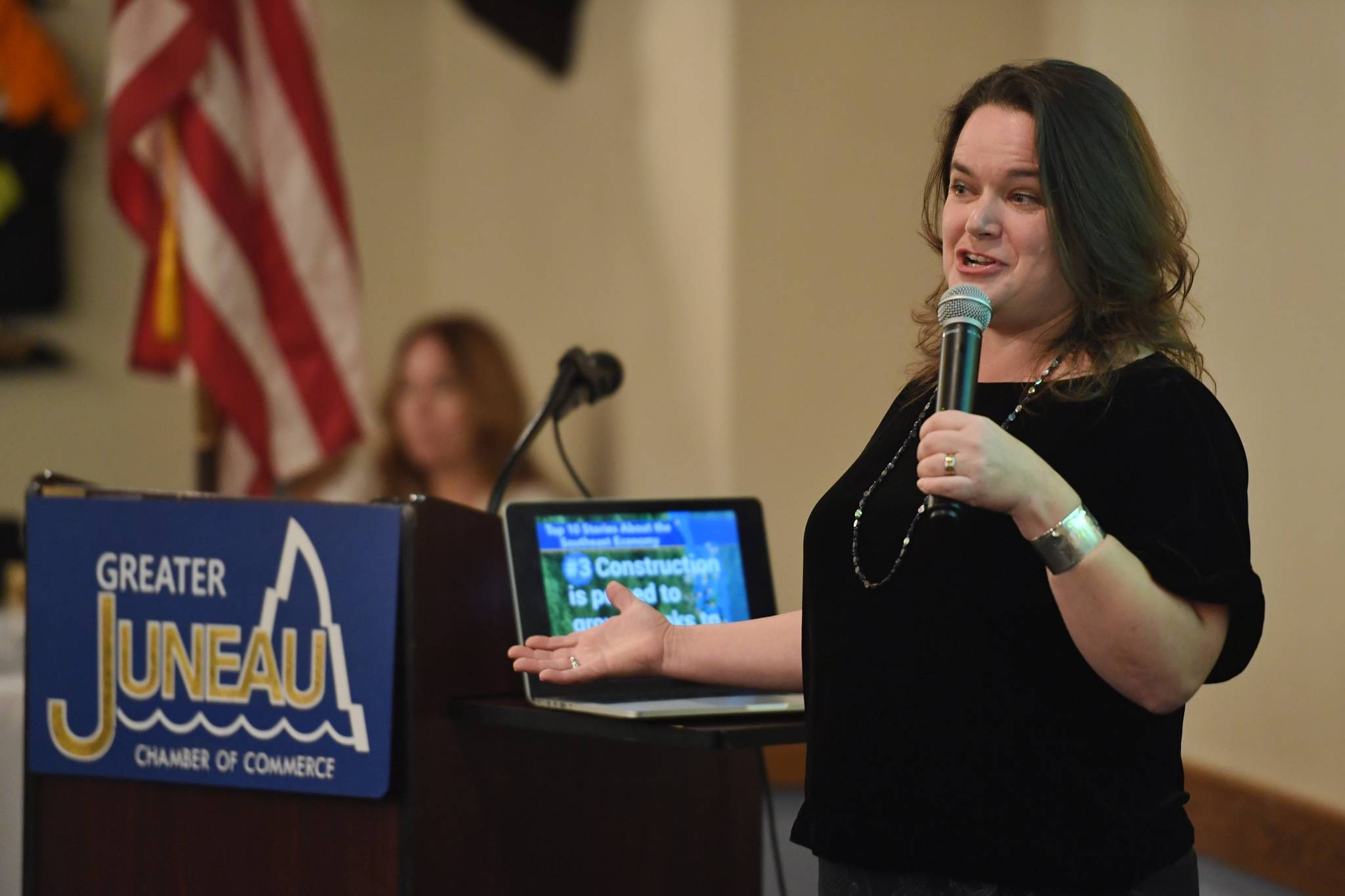It’s a time of uncertainty for the economy of Southeast Alaska, but there’s nothing to be disappointed about, according to Meilani Schijvens, executive director of South Cost Data.
But she ended that statement with a qualifier.
“Nothing to be disappointed about … yet,” she said in an interview with the Empire following her presentation at this week’s Juneau Chamber of Commerce Luncheon.
[Check out the Empire’s live coverage of the event]
Schijvens presented a wealth of detailed information on the economy of Southeast Alaska, compiled for the “Southeast By the Numbers” report from Southeast Conference.
Southeast Conference is a regional economic development organization which promotes economic activities in Southeast Alaska. Its executive director, Robert Venables, introduced Schijvens at the Luncheon. The By the Numbers report is released annually.
“The region’s complex economic framework is thriving in some segments, while struggling in others,” the report says. Record numbers of visitors are coming to Southeast and spending lots of money, but other parts of the region’s economy aren’t doing as well.
[Public gets a look at Kensington mine expansion]
The economy of Southeast Alaska is flat in a number of sectors, Schijvens said. Government jobs — federal, state and local — have all seen declines but the private sector has seen growth both in the health care and tourism industries, according to the report.
Southeast Conference’s data says that more than 800 state government jobs have been lost in Southeast Alaska the past seven years but almost 500 jobs have been added in health care in the past four years. The tourism industry added over 2,000 jobs in the past seven years and the Conference projects that in 2020 the roughly million-and-a-half visitors to Southeast Alaska will spend roughly $800 million.
But the loss of government jobs was a particular drag on the region’s economy, especially Juneau.
“So we’re adding jobs that are lower pay and they don’t have those benefits that come with the state type of job,” Schijvens said. “It’s hard to know right now where we’re headed with the state economy.”
The greatest number of jobs was added in the tourism industry, and Schijvens says that average annual earnings for tourism jobs was going up.
“But that also has to do with the number of hours,” she said. “So people are getting paid better in the visitor industry because they’re working more hours.”
[Alaska Attorney General says longstanding hiring law is unconstitutional]
After tourism, the health care industry added the most jobs, but competition for health care workers is steep across the nation so employers have to offer generous compensation to bring workers here. That in turn raises the cost of health care.
Keeping workers in Southeast is also a problem. Schijvens said that the top two factors that drew people to the region were pay and recreation, people seem to like the local environment. But the top two reasons people cited for leaving the region were cost of living and lack of child care.
There are some areas of growth, “some areas to be excited about,” Schijvens said. The construction industry was looking at a number of projects, many of which are tied to the tourism industry. But uncertainty about state funding will be a problem for Southeast due to its dependence on government jobs, she said.
• Contact reporter Peter Segall at 523-2228 or psegall@juneauempire.com.

